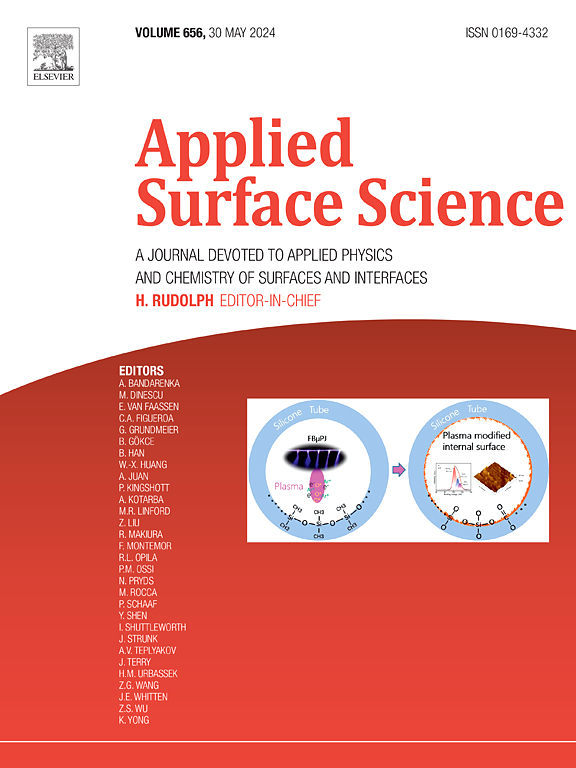Molecular assembly synthesis of microporous FeN4-doped carbon plates implanted with Fe3C-doped graphitized carbon nanobelts for efficient oxygen reduction
IF 6.3
2区 材料科学
Q2 CHEMISTRY, PHYSICAL
引用次数: 0
Abstract
Transition metal/nitrogen-doped carbon materials combining the merits of high surface, high graphitization, 2D morphology and rich active sites are appealing for electrocatalytic oxygen reduction reaction (ORR). This work proposes a molecular assembly strategy to synthesize novel Fe/N-doped carbon materials with these properties acquired simultaneously. Histidine (His), potassium bicarbonate (PBC) and ferrous bisglycinate (Fe(Gly)2) are assembled into a uniformly mixed aggregate. Pyrolysis of the aggregate converts the His component to 2D highly microporous carbon plates carrying atomic FeN4 sites via foaming, carbonization and in-situ activation and drives the Fe(Gly)2 component to form highly graphitized carbon nanobelts encapsulating Fe3C nanoparticles via carbonization and local catalytic graphitization. The typical material possesses a high surface area of 1728 m2 g−1, uniform micropores of 0.6 and 1.8 nm and rich FeN4 sites and Fe3C nanoparticles. It shows high ORR performance with a half-wave potential of 0.90 V, fast kinetics, low H2O2 yields, high stability and superior methanol tolerance. The influences of the Fe(Gly)2 dosage and pyrolysis temperature and the roles of Fe(Gly)2 and PBC are discussed. The high ORR performance of the typical material originates from the active FeN4 and Fe3C sites and the high porosity and graphitization for facile mass and electron transfer.


分子组装合成植入掺杂 Fe3C 的石墨化碳纳米颗粒的掺杂 FeN4 的微孔碳板,用于高效氧气还原
过渡金属/氮掺杂碳材料兼具高表面、高石墨化、二维形态和丰富活性位点等优点,在电催化氧还原反应(ORR)方面具有吸引力。本研究提出了一种分子组装策略,以合成同时具备这些特性的新型铁/氮掺杂碳材料。组氨酸(His)、碳酸氢钾(PBC)和甘氨酸亚铁(Fe(Gly)2)被组装成均匀混合的聚合体。通过发泡、碳化和原位活化,聚合体的热解将 His 成分转化为携带原子 FeN4 位点的二维高微孔碳板,并通过碳化和局部催化石墨化,促使 Fe(Gly)2 成分形成包裹 Fe3C 纳米粒子的高石墨化碳纳米颗粒。这种典型的材料具有 1728 m2 g-1 的高表面积、0.6 和 1.8 nm 的均匀微孔以及丰富的 FeN4 位点和 Fe3C 纳米颗粒。它具有较高的 ORR 性能(半波电位为 0.90 V)、快速的动力学、较低的 H2O2 产率、较高的稳定性和优异的甲醇耐受性。本文讨论了 Fe(Gly)2 用量和热解温度的影响以及 Fe(Gly)2 和 PBC 的作用。典型材料的高 ORR 性能源于其活性 FeN4 和 Fe3C 位点以及高孔隙率和石墨化,这有利于质量和电子的转移。
本文章由计算机程序翻译,如有差异,请以英文原文为准。
求助全文
约1分钟内获得全文
求助全文
来源期刊

Applied Surface Science
工程技术-材料科学:膜
CiteScore
12.50
自引率
7.50%
发文量
3393
审稿时长
67 days
期刊介绍:
Applied Surface Science covers topics contributing to a better understanding of surfaces, interfaces, nanostructures and their applications. The journal is concerned with scientific research on the atomic and molecular level of material properties determined with specific surface analytical techniques and/or computational methods, as well as the processing of such structures.
 求助内容:
求助内容: 应助结果提醒方式:
应助结果提醒方式:


